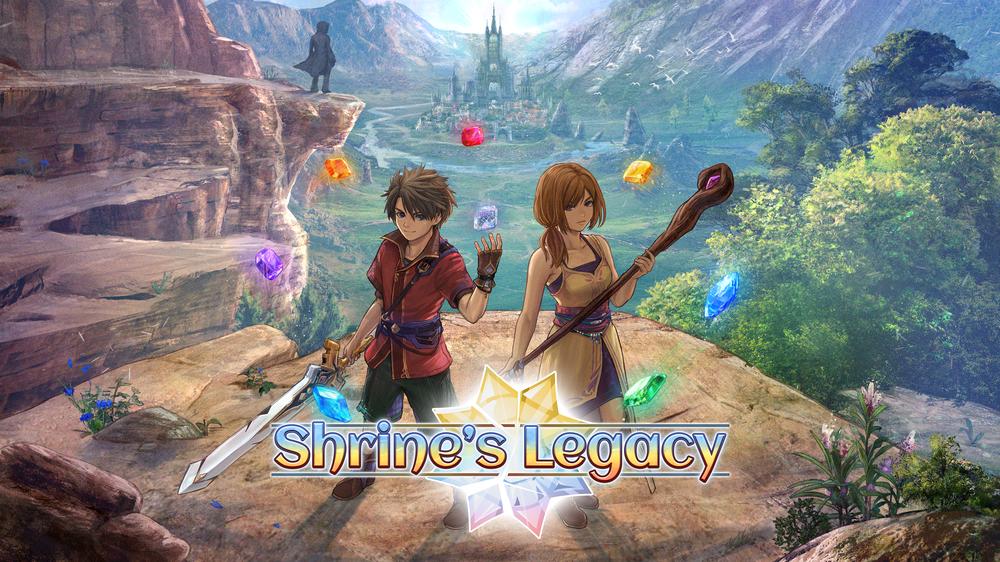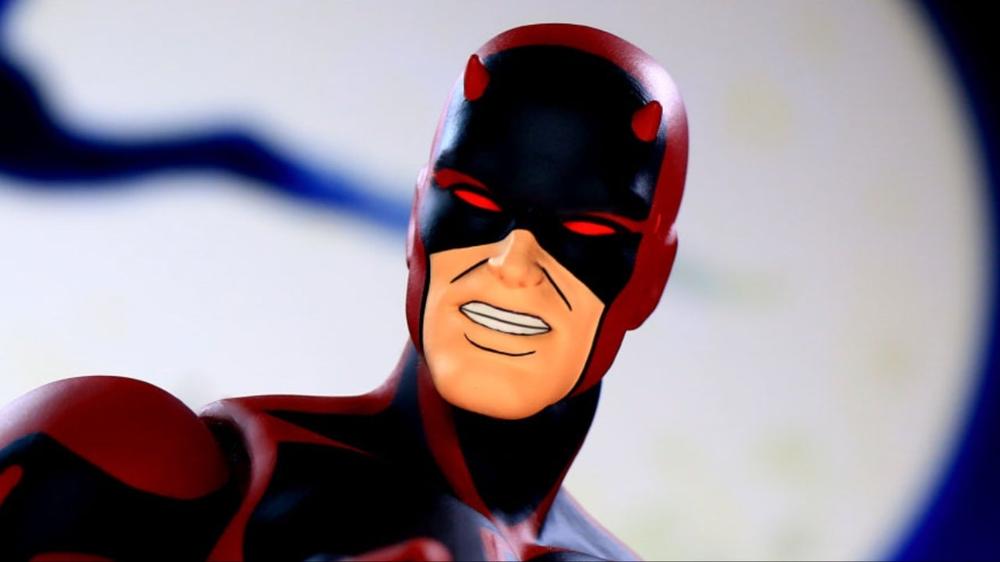Shrine’s Legacy is a 16-bit action RPG that releases on PC on October 7. It tells the story of young heroes Rio and Reima as they try to banish an ancient evil and save the world.
Take one look at screenshots and you can tell the game’s aesthetic was inspired by the SNES era of RPGs. The whole game can be played solo or in two-person co-op, either through couch co-op or online via Remote Play or Parsec. If you play co-op, each of you controls either Rio (a melee fighter) or Reima (a ranged mage). If you play solo, you can swap between the two characters at any time, with AI taking over whichever one you’re not controlling.
The game was primarily made by the two-man dev team of longtime friends Alan Gabbard and Joseph Duke, with some help from other friends along the way. It’s the first release for their company Positive Concept Games, has been several years in the making, and was helped along by a successful Kickstarter campaign.
To celebrate the game’s impending release, we had a wide-ranging chat with Alan and Joseph. We touched on everything from their inspirations (which range from Chrono Trigger to Hollow Knight), to Shrine’s Legacy’s gameplay and story, to their plans for releasing on other platforms.
You two have been friends for a long time. At what point did you decide you wanted to create games together?
Joseph Duke: Funny enough, we've been working together on games almost as long as we've been friends.
Alan Gabbard: It was back in high school where I first met Joe in health class. I was a sophomore and Joe was a junior — for context, we are in our 30s now. One day, we began talking about our love for Super Nintendo games. Joseph had already dabbled a lot in RPG Maker and programming in general, and I had a passion for the writing and storytelling aspect in video games. Joe pitched me to come up with a storyline for a space shooter project he was working on, which sadly never came to fruition. However, I pitched the idea for what would eventually become Shrine's Legacy and that's when we got to work creating our first game.
It’s immediately clear that you were inspired by the SNES era. What games in particular were your favorites from that era, and what parts of Shrine’s Legacy did they inspire?
Alan: My favorite SNES games are Chrono Trigger, Terranigma, and Zelda: A Link to the Past. We got a lot of inspiration with our combat from Zelda and Terranigma, while Illusion of Gaia and Super Metroid inspired how we designed maps and level progression within dungeons. We take a lot of influence from Final Fantasy, Chrono Trigger, and the Soul Blazer games when it comes to storytelling, dialogue writing, and the general moment-to-moment gameplay feel.
Joseph: My favorite Super Nintendo games are Final Fantasy VI, Terranigma and the other Soul Blazer games, Chrono Trigger, a Link to the Past, and Super Metroid. And really even more, my list would be huge if I kept going. So many inspirations have gone into Shrine's Legacy, and Alan explains them well. To add to what he said, many people would see Secret of Mana influence, and that is true, mostly in terms of the co-op multiplayer aspect.
Nostalgia is powerful, but gaming has advanced a lot in the last 30 years. How difficult was it to balance staying true to your retro inspirations while also modernizing gameplay?
Joseph: Balancing hasn't been terribly difficult, but we did make an effort to include options that many people expect, including setting the screen scale, rebindable inputs, controller support in addition to keyboard, button styles based on your controller, etc.
Alan: We are trying our damnedest to keep some of that old-school SNES challenge in combat intact (players can look forward to a Hard Mode setting post-launch) but also acknowledge that dying and having to retry difficult sections of a modern game can be frustrating. We have a "Retry" option for bosses that prove especially finicky so players can skip all the cutscenes leading up to the boss fights. Dying in any other part of the game will also reload you back to the most recent save point. And while there are no auto-saves, players are fully healed at each save point. It's a tricky balance between quality of life while retaining some challenge.
Games with a focus on couch co-op are few and far between these days. Was that always something baked into the DNA of Shrine’s Legacy? Or did you land on it during the course of development?
Alan: It was always our intention to have a co-op capability from the beginning.
Joseph: Yes, it was always planned.
The game can be played solo and you can switch characters on the fly, with AI controlling whichever protagonist you aren’t playing as. How difficult was that to implement, and why was it important to you that it be playable solo or in co-op?
Joseph: Because Alan and I really enjoyed playing games together. We wish more Final Fantasy games included co-op, I believe they even removed it from later re-releases of Final Fantasy IX! Implementing it has indeed led to some challenges. We opted to try and keep the functionality as simple as possible, but there are certain downsides to that strategy. The AI character stays close to Player 1 during combat, so that the better you dodge, the more likely the AI is to also dodge. Occasionally though, they still find themselves getting hit when you don't. I don't think it'll harm the gameplay too much, but it might be something that gets some improvements over time as we update the game.
Alan: Since it was planned from the start of development, adding co-op hasn't been the most daunting interference with the process of making Shrine's Legacy. As two friends that love RPGs, we have always felt not enough RPG games have true co-op options. Secret of Mana showed us that you can make a SNES-style action RPG that can be played solo or with friends in cooperative gameplay. That's why it was important for us to achieve what the Mana games were doing in terms of sharing the experience with loved ones on the couch...or at a computer monitor for this initial PC release.
Gameplay is obviously important, but a good RPG also needs a compelling story. How important to you were the world building, characters, and narrative of Shrine’s Legacy?
Joseph: Very important. One thing we didn't figure out until some ways in was how important humor and levity is in an otherwise mostly dramatic story. Luckily, we had plenty of time to sprinkle those things in. The story script actually went through several drafts over years before it was final. This was mostly from us leveling up our design game over time as we learned more. It's still a fairly simple story, but we were determined to make the characters shine in particular.
Alan: I mentioned before that Final Fantasy and the Soul Blazer trilogy were instrumental to the narrative and dialogue. I approached the story as though we were telling something akin to a classic Final Fantasy tale, think Final Fantasy IV or Final Fantasy V. It was important to have a strong sense of balance between dramatic storytelling and levity like so many great JRPGs of the past had. The characters drive this story and the worldbuilding supplements that. Of course, outside mediums influenced how I wrote the story and characters. Avatar: The Last Airbender is one of my biggest influences in that regard.
How would you describe the tone of the story?
Alan: Shrine's Legacy is largely a fun fantasy adventure romp like so many classic JRPGs that are beloved. However, the tone shifts to a more dramatic feel where appropriate, especially in the latter half of the game.
Can you tell us about the exploration and dungeons? Is exploration linear or are there secret areas to unlock?
Joseph: The world of Shrine's Legacy is quite large and dense, especially for an indie game. There are tons of secrets and hidden spots, even a few completely optional areas and dungeons you could easily miss out on if you rush through the game. It's mostly linear in progression order, but there are points where the story opens up and gives you options of what to tackle next.
Alan: JRPGs of the old days had a tendency to disguise their linearity quite well and would sometimes let you tackle certain story beats out of order. I'm happy to say Shrine's Legacy does the same thing! It's not completely linear, but it has enough linearity to tell a focused story. There are plenty of secrets to find and a few dungeons can be completed out of the intended order!
Do all dungeons include boss fights? How varied are they, and what would you say is the difficulty level of those fights?
Alan: Not all dungeons have a boss battle, but most do. Every boss fight is very different, many requiring use of some puzzle knowledge to defeat. The difficulty is meant to amp up the further you progress in the game. We'll be adding a few miniboss battles after the game launches, plus the hardest boss battles in the game, which unfortunately had to be cut due to time. More importantly, we'd like to adjust boss and enemy AI for our planned Hard Mode. We are even considering an eventual boss rush mode...
Joseph: I believe there are two mini-dungeons that don't have a true boss fight, but every single other dungeon does. There are only a couple reskin bosses, but even they look and act different than their original counterpart. Every other boss is completely unique and a lot of effort went into designing them. As for difficulty, this is no Hollow Knight or Silksong. While the game tries to deliver a challenge, it gives you many ways to become stronger i.e. by exploring for treasure, grinding levels, making potions that can heal or buff you during the battle if you are struggling.
But you might be surprised to learn that Hollow Knight did encourage a lot of the design philosophy for how the bosses themselves function. We tried to approach boss design in a "each battle is a dance" kind of way where you must respect the patterns of the boss and react accordingly. And like Alan mentions, we'd love to make a truly Hard Mode whenever we can. Not a simple numbers buff, but a true rework of how you have to play the game that makes every boss a truly fearsome foe.
How about puzzles? Are there lots of them, and are they required to progress or are they optional to find gear and items?
Alan: There are a lot of puzzles in the game. You use magic spells in combat, but they also have practical uses on the field for traversal and solving puzzles. Think of it like Link's toolkit in Zelda games. Which, if I'm being honest, about 50% of Shrine's Legacy's DNA is a Zelda-like. We're still an action RPG at heart, but I'm confident Zelda-like fans would enjoy our game if they don't mind a little more story and dialogue than normal!
Joseph: There are lots of both required and optional puzzles, though we try to keep the puzzle difficulty and length on the lower end to keep the pace of the game strong.
How long would you estimate it will take a new player to complete a playthrough?
Joseph: I would say anywhere from 12–28 hours depending on your pace and level of completion. Probably around 18 hours on average.
Alan: Anywhere from 16–20 hours on a casual playthrough. Doing everything will take about 25–30 hours for a first-timer without a guide.
We know about the game’s release on Steam. Are there plans to bring it to other platforms in the future?
Alan: We are also releasing on GOG and Epic on October 7! We plan to bring Shrine's Legacy to Nintendo Switch as soon as humanly possible after launching on PC. PlayStation and Xbox depends on how well sales go.
Joseph: I'll only add that the goal is to try and get the Switch port out by early next year. The whole process will be a learning process though, as it's not something we've ever done before and I don't know how much effort it'll be yet. I guess what I'm saying is please be patient with us!
Is there anything else you’d like to say to players eager to get their hands on Shrine’s Legacy?
Joseph: Shrine's Legacy has been a labor of love and years and years of hard work. It won't be perfect on launch, no game is, but we are going to keep supporting it for some time. We want this game to be as incredible as it can be. But more than anything, I hope it brings you back to the good old times when games were weird, fun, and bold in their design decisions.

 Mondo Delivers a Double Dose of Daredevil With New Figure and Poster | NYCC 2025
Mondo Delivers a Double Dose of Daredevil With New Figure and Poster | NYCC 2025